Cotton is the single most crucial fiber in the world. In 2004, cotton was used in approximately 50% of apparel, 60% of furnishings, and 9% of industrial or technical products. Cotton is an essential fiber because of its versatility, natural comfort, and ease of finishing and dyeing. Cotton cultivation process from field to factory has been presented in this article.
From field to factory:
This article has been divided into four parts. They are the following:
- Cultivating process of cotton.
- Harvesting.
- Ginning process.
- Baling process.
1. Cultivating process of cotton
1.1 Climate suitable for cotton cultivation:
Cotton grows anywhere where the growing season is long and the weather is temperate to hot with adequate rainfall. That means cotton can be cultivated only in warm places. The ideal rain of 60 to 100 cm is suitable for cotton cultivation. Without warm weather or below 700 F, cellulose will not form. For this reason, cotton is mostly cultivated in the southern part of the United States, central California.
1.2 Soil preparation for cotton cultivation:
Cotton can be cultivated in a wide range of soils. But this soil may include grey-brown, red-brown, yellow-brown, and black-type soil. Loamy soil mixed with lime and potash is ideal for cotton cultivation. Because the water-holding capacity of loamy soil is high. PH for cotton cultivation is required between 5.8 to 8.0. The cotton plant field should be flat because cotton doesn’t withstand water logging. The cotton field land preparation should be done in the dry season. First clear other trees, bushes, and significant vegetation. Then given, plow the field.
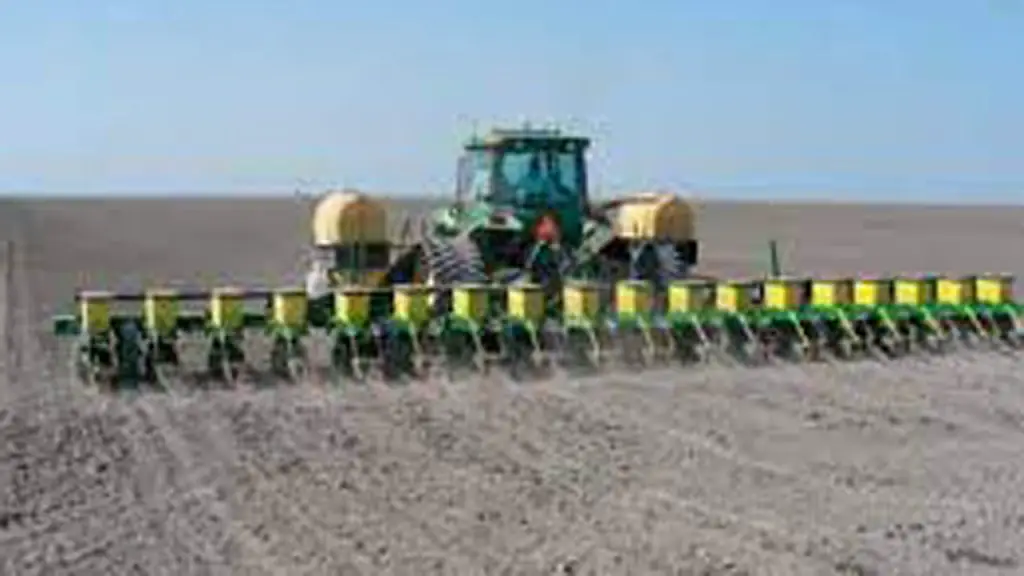
1.3 Seed treatment for cotton cultivation:
Before sowing, the seed needs treatment to protect it from harmful bacteria. It is an anti-bacterial treatment. For cotton seed treatment, about 3gm/1kg fungicides are given. First, make a fungicide solution with sufficient thickness and apply it to the cotton seed. They then dried the cotton seed. Cotton seed should be used for sowing after fully dried.
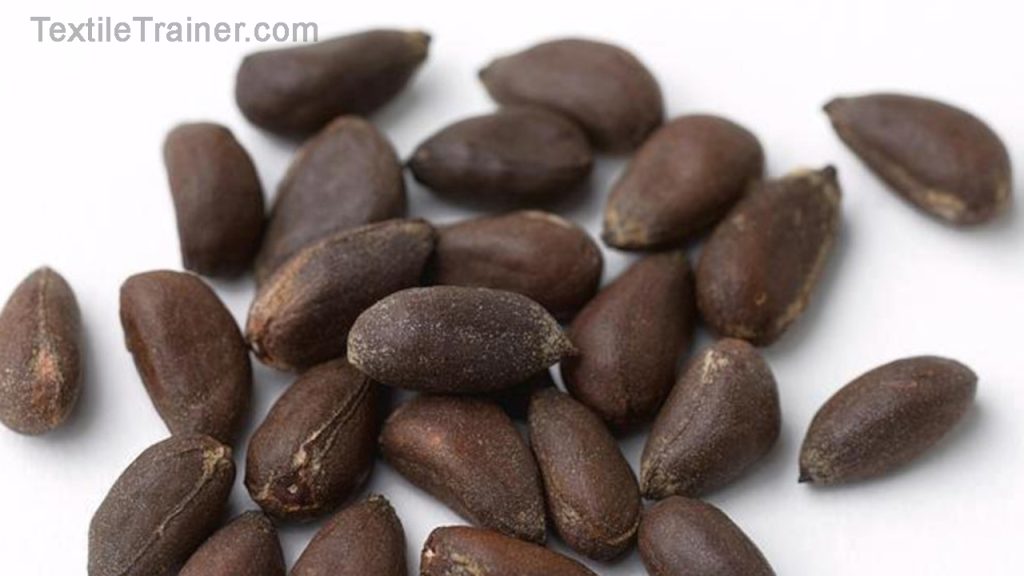
1.4 Sowing of cotton seed:
In the United States, usually in March or April, cotton seeds are planted in rows. Cotton seed is an essential factor for an excellent yield. If the seed is older than two or more years should be avoided. Cotton seeds can be sowed manually or by using sowing machines. About 25 to 30 kg of seed is required per 1-acre cultivation. But the amount of seed depends on cultivation methods. The sowing depth of the cotton seed is about 4 to 5 cm. the distance between two rows is about 3 ft. In the sowing lines, we sow the seeds leaving an avg. distance of about 3 inches.
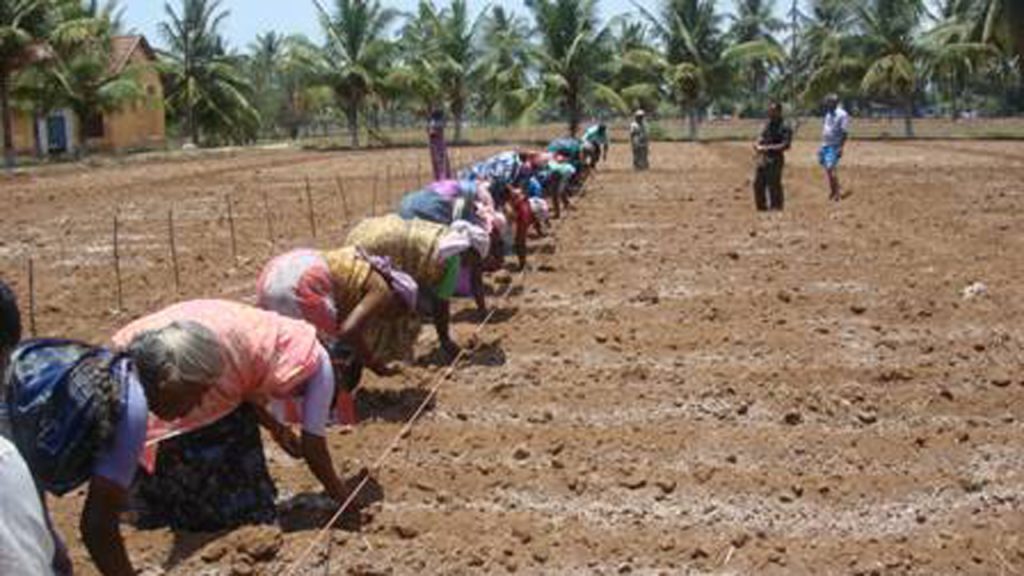
1.5 Irrigation on cotton field:
The irrigation of cotton fields depends upon factors such as soil texture, frequency of cultivation, and topography. The irrigation may be done by hand or by mechanical rotary hoes. Flowering and boll formation would be the critical phases. The summer sowed harvest needs regular irrigations at 8-12 days intervals.
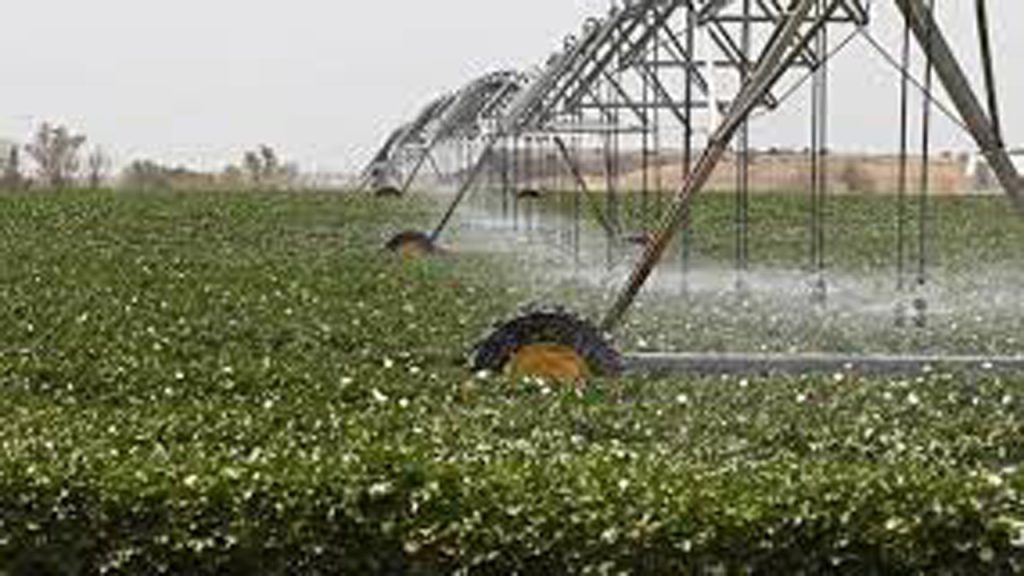
1.6 Pollination of cotton plants:
Pollination of cotton is most important. Because the production of fiber or seeds depends on the pollination of cotton. Some cotton plants are self-fertile and self-pollinating, while some need pollinators. The self-pollinating cotton plant doesn’t require bees. But it has been estimated that the visits of bees to most cotton plants increase final fiber production. Besides, the quantity of seed production also increases. Each cotton plant could be pollinated on average for only one day once the blossom is open.
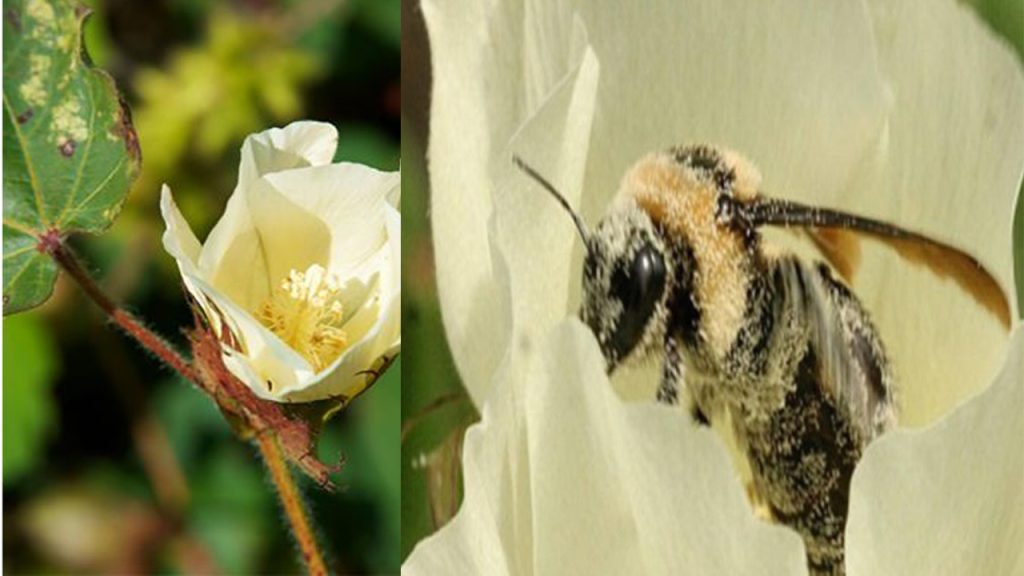
1.7 Weed control, thinning and gap filling:
Weed reduces the yield of cotton. So good weed control is an essential factor for successful cotton cultivation. Weeds can be controlled in three ways such as weeds can be controlled manually weeding, weeds can be controlled by utilizing inter-row cultivators, and another way is chemical spraying. In irrigated cotton, 4-5 cotton seeds are sown dibbled at the time of dibbling. So, it is necessary to carry out the thinning operation. Usually, the thinning process should be carried out after 2 to 3 weeks of sowing by keeping only two healthy plants at each hill. If any seeds are not germinating even after one week of sowing, gap filling should be carried out by planting healthy cotton plants.
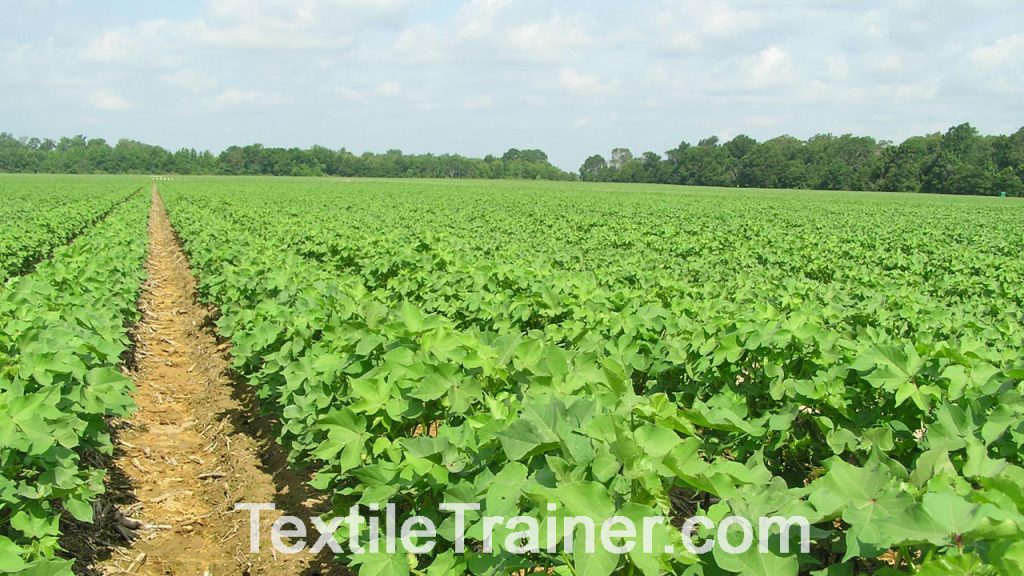
1.8 Require fertilizer for cotton cultivation:
The fertilizer required for irrigated cotton is 100 kg nitrogen, 50 kg phosphorus, and 50 kg potash per hectare. It is better to follow the ring process when nitrogen is given. About 20% fertilizer should be given at the time of sowing, and 40% fertilizer should be given at the time of square formation. The final 40% fertilizer ought to be given when flowering. But the amount of fertilizer will be reduced in the case of hybrid varieties. For hybrid varieties, 80 kg nitrogen, 40 kg phosphorus, and 40 kg potash per hectare. ¼ the fertilizer is given at the time of sowing, and ½ fertilizer is given 4 months after sowing. The remaining ¼ fertilizer is given through spraying.
1.9 Pest control and diseases control of cotton cultivation:
Jassid, Red cotton bug, American Bollworm, cotton leaf roller, and aphids are common pests in cotton cultivation. Pesticides have to spray according to the pest. To protect the plants, insecticides are sprayed by hand, tractors, or airplanes. Powdery mildew, Anthracnose, and leaf spots are common diseases in cotton cultivation. To control diseases, contact the agriculture technical officer.
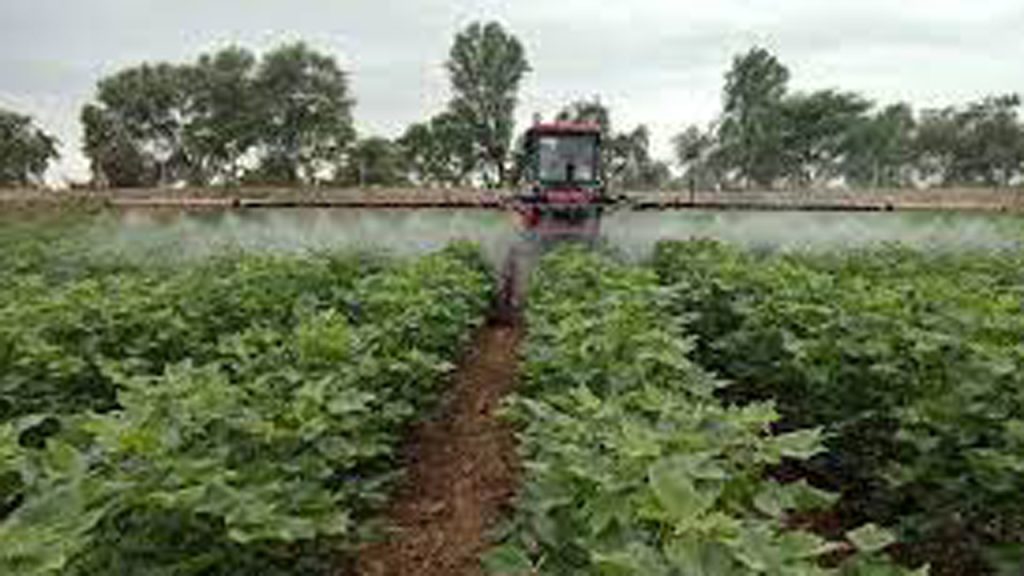
1.10 Bloom to cotton period:
Buds appear a few weeks after the plant emerges. They bloom as creamy white blossoms about 3 weeks later in June or July. These blossoms change to pink and then to reddish purple. Within three days, their petals fall off, leaving the ripening seedpod. The fibers that grow from the surface of the seeds cause the pod to expand to about 25 mm in diameter and 40 mm in length to form the cotton boll. The cotton bolls grow to full size by August or September, a month and a half to two months after the blossoms first appeared. When fully grown, the cotton pant may be from 3 to 6 feet in height. Its wide green leaves conceal some of the bolls, which begin to burst with fleecy white cotton fiber. This indicates that the cotton bolls are ready for harvesting.
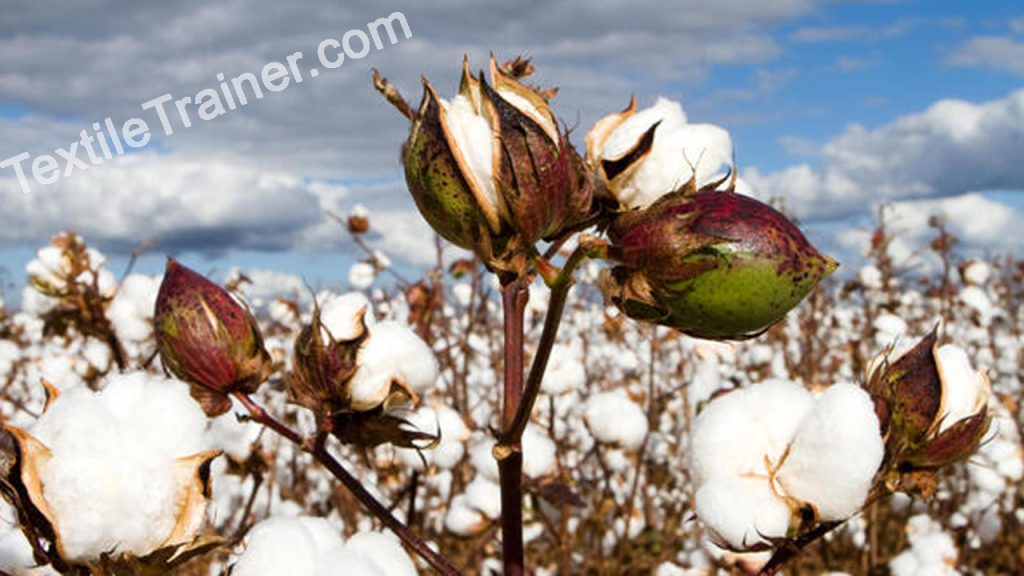
2. Harvesting:
When the bolls have all opened, some leaves will have fallen off. To remove all of the leaves, the plants are defoliated by spraying them with a chemical, causing the remaining leaves to wither and fall. The full, ripe bolls are then picked. Cotton is most often picked by machine. Cotton bolls are picked by machine, one or two rows at a time.
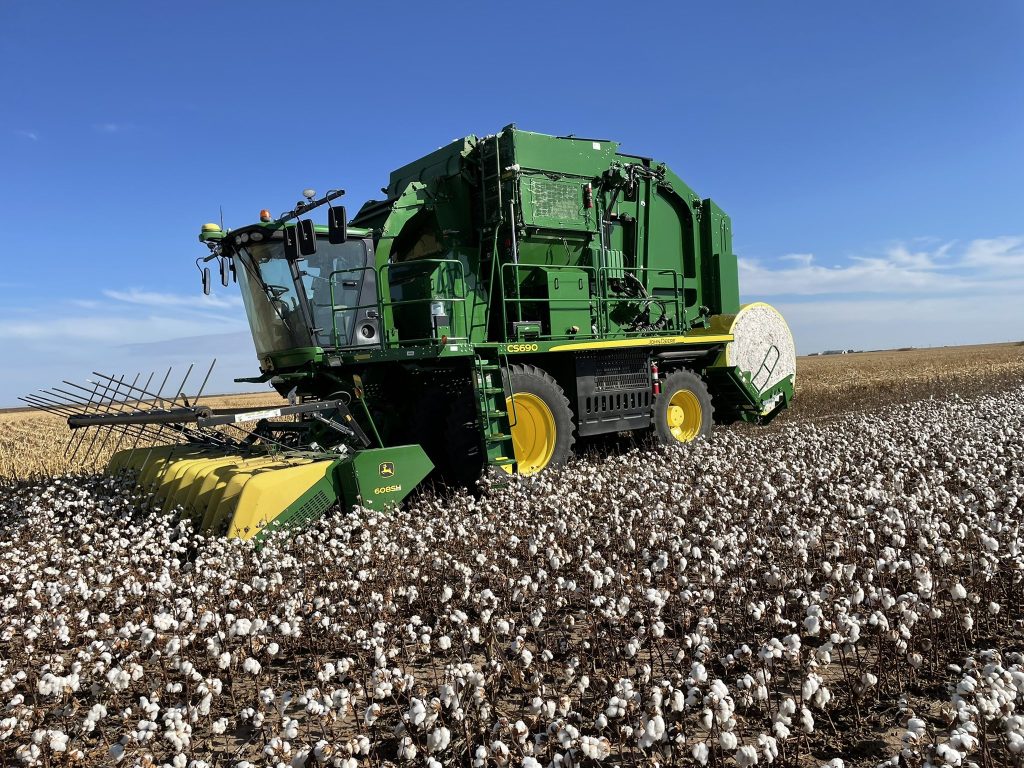
3. Ginning:
When raw cotton is harvested, it contains seeds, leaf fragments, dirt, and other materials. This contamination must be removed before being baled. Cottonseeds alone constitute approximately two-thirds of the weight of the raw cotton when first picked. The process of removing cotton seeds, leaf fragments, dirt, and other contamination is called ginning.
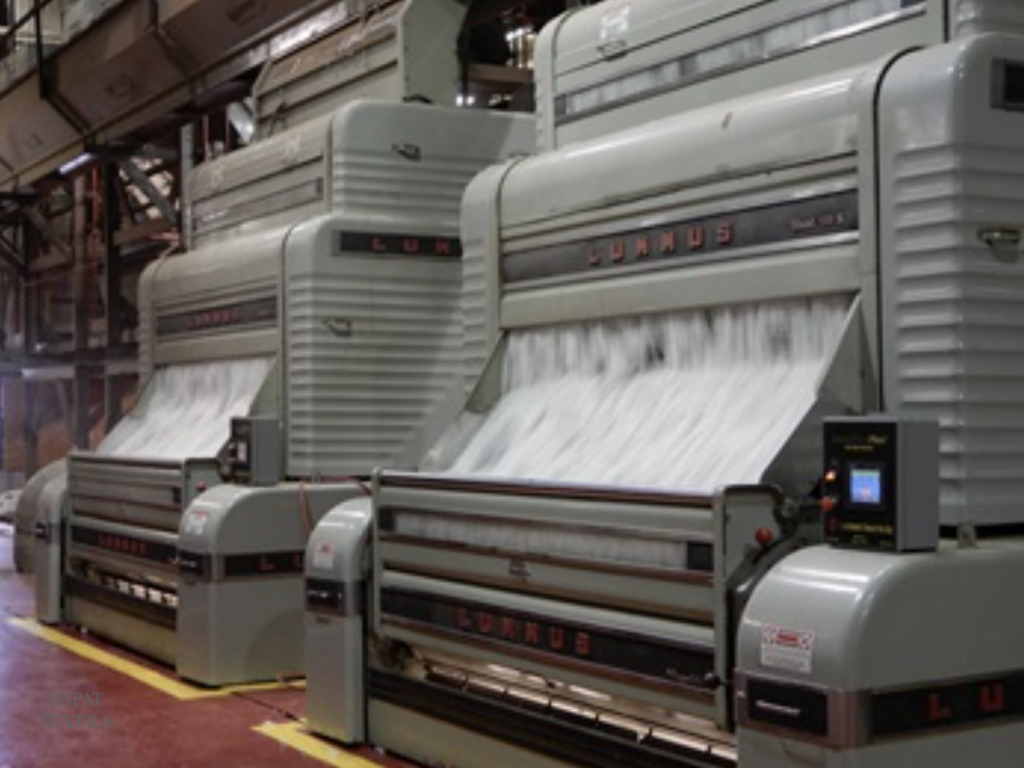
4. Baling process:
After the ginning process, raw cotton is sent to the bale section. The cotton fiber is compressed into rectangular bales in the bale section, which are covered with jute or polypropylene bagging and bound with iron bangs. Then bale sends it to the marketing department to sell or send to the spinning section. These bales weigh about 225 kg ( 500 pounds) each.
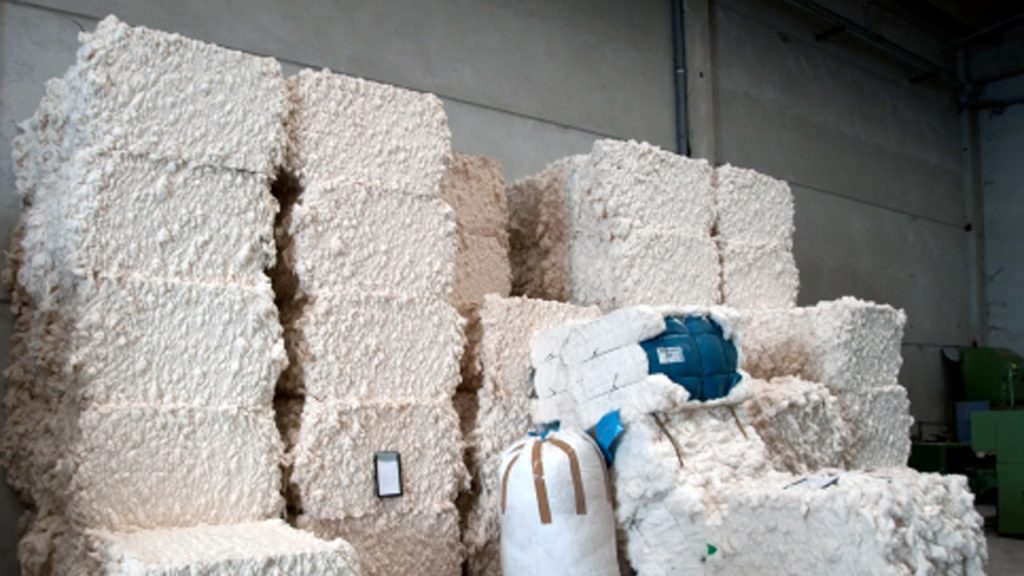
Cultivation and harvesting process of cotton is described in easy easy. If you have any question, let me know by comment box.
References
- Corbman, B. P. (1983). Textiles Fiber to Fabric. New York: Mc Graw Hill.
- Hossain, M. S. (2014). Introduction to Textile Engineering. Dhaka: Books Fair Publications.
- Kadolph, S. J. (2009). Textiles. New Delhi: Dorling Kindersley.
- Siddique, D. H. (n.d.). Natural Fibers. Dhaka.
- AsiaFarming. com
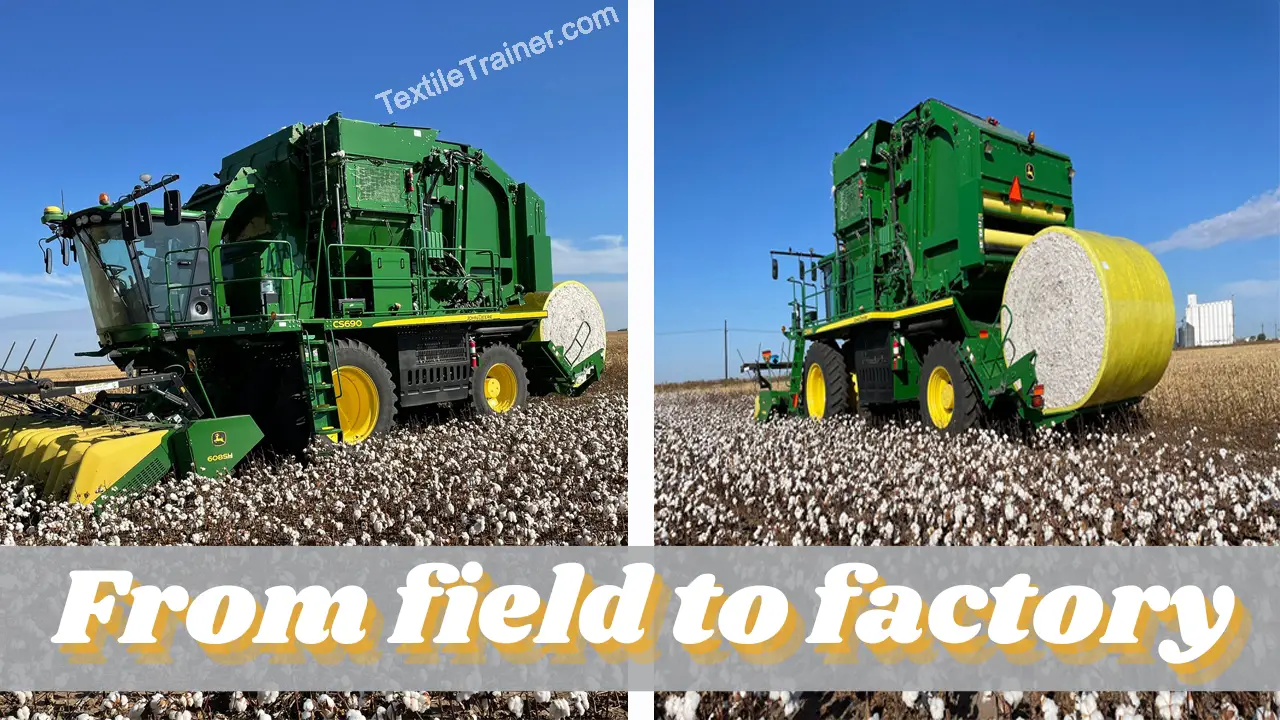




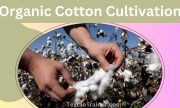

1 thought on “Cotton Processing from Field to Factory/ Cultivation and Harvesting Process of Cotton is Described in Easy Way”